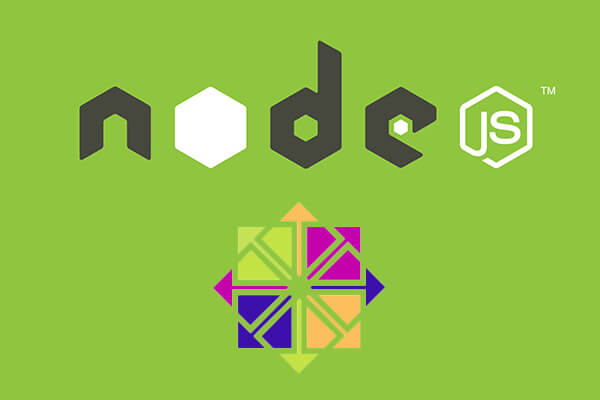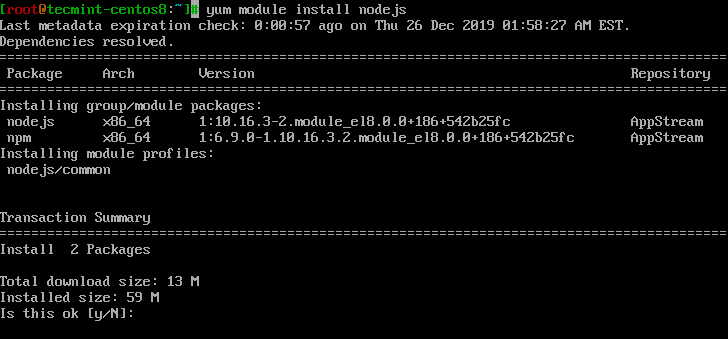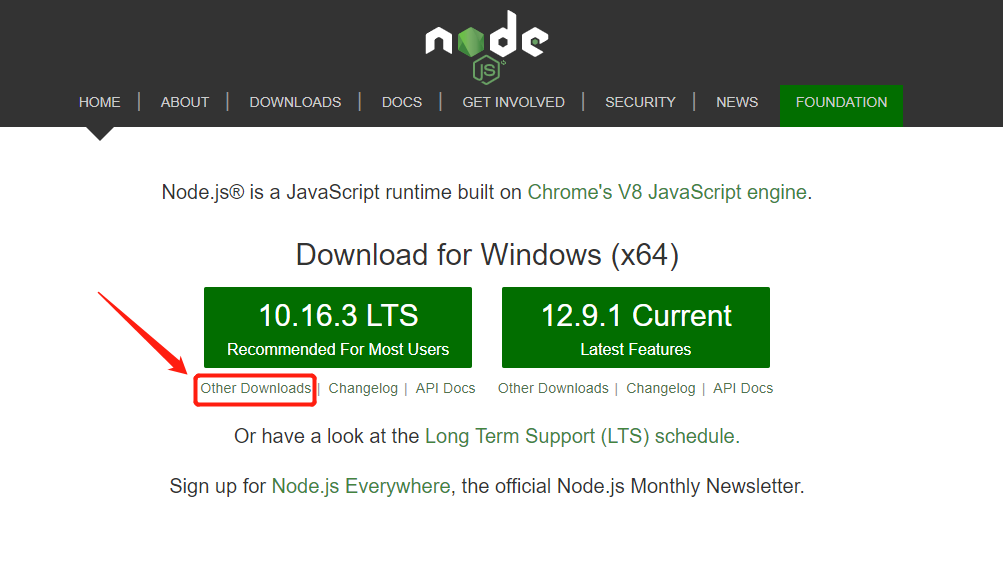

cPanel Support is limited by the amount of assistance we can provide with code diagnosis. Let’s check the current version and location of Node.js and npm (the Node.js package. On my machine, I had previously installed Node.js using the following command: sudo yum install nodejs. Please note NodeJS is a back-end JavaScript runtime environment. In this blog post I will explain how you can upgrade Node.js to the most recent version using the yum package manager utility on CentOS Linux 7. sudo npm cache clean -f sudo npm install -g n sudo n stable. Step-by-step instructions and guidance on installing a NodeJS web application can be found in our documentation below:ĬPanel Docs | How to Install a Node.js Application Use n module from npm in order to upgrade node.

Click Next, proceed with the provision, and once the provision is completed, please proceed to read the rest of the article:.Updating using Homebrew on macOS There is an easier way to upgrade Node. Updating using a Node installer on macOS and Windows 5. Updating using a Node installer on Linux 4. Updating using a Node version manager on Windows 3. Select to install ea-apache24-mod_env, ea-ruby27-mod_passenger and finally ea-nodejs16: Updating using a Node version manager on macOS or Linux 2.Navigate to WHM » Software » EasyApache 4 and click customize:.How to install NodeJS via the WHM interface Verify that it has been installed correctly with the following command:.Access the command line as root and run the following command:.

How to install NodeJS via the command line On June 20th, 2019, we had introduced the Application Manager interface, which allowed users to deploy applications that included NodeJS with the Phusion Passenger application server. How can I install NodeJS and utilize it for my web application? Procedure


 0 kommentar(er)
0 kommentar(er)
